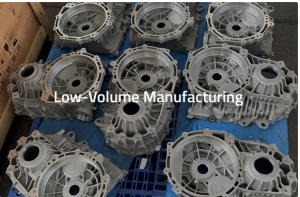Prototyping vs Production: Use Case
CNC prototyping and CNC machining go hand in hand a lot, these technologies are like siblings, but they have very different purposes. One of the central aspects of CNC prototyping is its emphasis on producing either protptype models or proof-of-concept initiatives. These early representations are vital in the design phase, enabling engineers and designers to asses and refine the functionality, the look, and the fit of their product prior to full-scale production. CNC machining, on the other hand, is typically kept for as the final process, and is usually pressed up to supply parts that are needed end-use precision and strength.
Quantity: One vs. Many
The number of parts manufactured stands as a clear demarcation when it comes to CNC prototyping vs. CNC machining. In most cases, prototyping consists of only one part or a small quantity of the parts. This is enough to get a preview of how a significant will look and work to avoid massive cost for to call-off actual parts/products In contrast, CNC machining is highly adaptable for mass production, ensuring the precise manufacturer of high-volume parts. Some production runs may involve hundreds or thousands of the same unit.
Cost considerations and materials
CNC prototyping, while it can also handle a wider variety of materials, often uses different or less expensive materials because the true purpose of the prototype is simply to test a concept. When it comes to prototyping, the simplest materials may be used which may be less expensive than the final material with similar properties to keep the costs under control. On the contrary, production CNC machining uses real materials that are planned for final products, which can greatly change the final cost as the closer the machined material is to final product material, the closer the part price will be to part production price.

Precision and Detail Machining
This level of detail and finishing here is often higher when compared to the production method which is used in CNC machining. The end goals of production parts vs. functional prototypes are two very different sides of the same coin, with production parts needing to meet precise specifications for integration in to final products, including things like better finishes and stricter tolerances, commonly ranging from ±0.0005 inches to ±0.005 inches. Prototyping might be less tight in tolerances since it is not the final product — it is intended to test as many concepts as you can perform in a short time, so it should be accurate but not fully functional.
Speed and Iterations
Prototyping requires speed The idea is generally that some part or model is created quickly allowing for design evaluations and alterations without the long lead times. This means that CNC prototyping is a form of speed-optimized production machining rather than durability-optimized. CNC prototyping is frequently further iterated. For example, engineers might cut a variety of different semiexperimental batches production to test for a design alternation that is more rare in the production phase due to the cost and time related to consistent changes.
Complexity and Customization
The flexibility, especially in complexity and customizability, with CNC prototyping is wider. Given a prototype is often a single production run, one can more easily make modifications and specialise functionality without being weighed up by the economies of scale that apply in mass production. This flexibility lends well for designers to test out other trickier concepts and topographies that could be too expensive or inappropriate to manufacture at large scale with the usual CNC machining approach.
Innovating Each Slice Way Keep Driving
Keeping prototyping alive and driving our innovations forward and blending that future with CNC machined parts that are a vital part of the history of modern manufacturing. By understanding how they are different, corporations can strategically pair the two to create the best product development and production methods to effectively and creatively get new products to market.